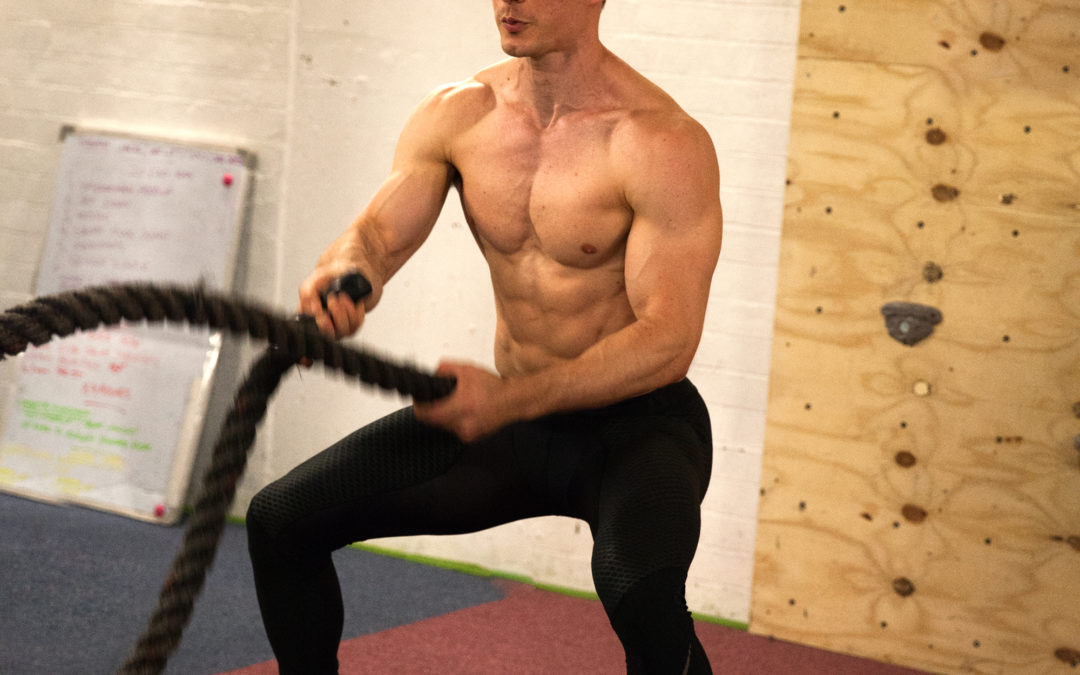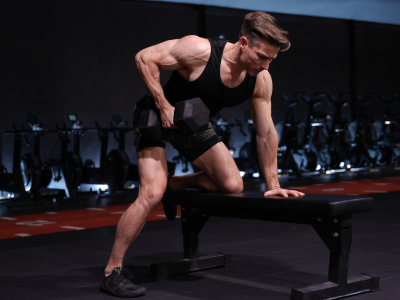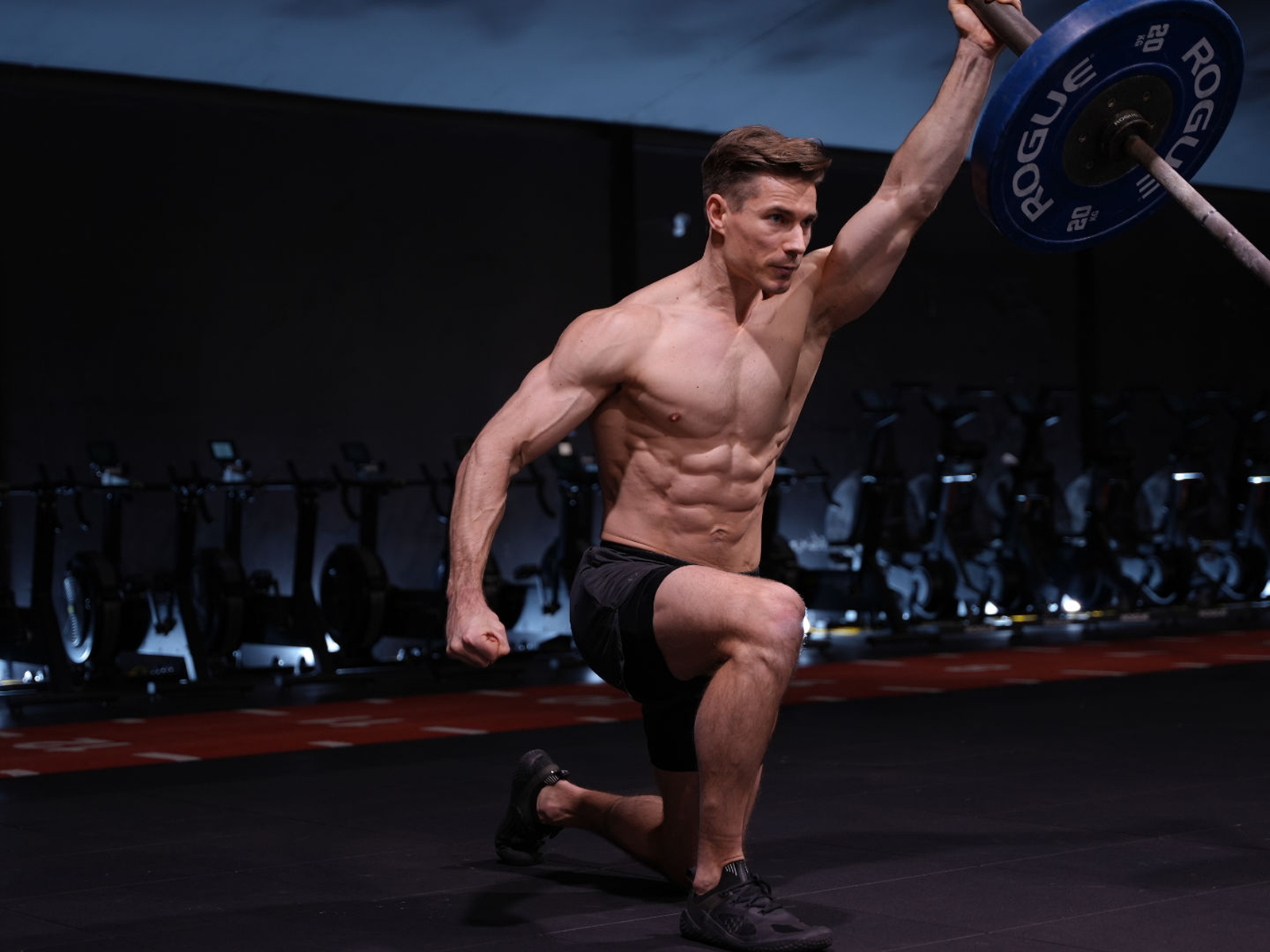High Intensity Interval Training (HIIT) struck the fitness scene with the force and might of Thor’s Hammer. Many years later and it’s mark has continued to grow – topping the charts as this year’s #1 fitness trend (According to the American College of Sports Medicine).
When it comes to fitness ‘trends’, my usual stance is to avoid them – hell do the exact opposite. But with HIIT, I wont be so dismissive.
This time-efficient cardio tool has stood the test of time for a reason. It can be super effective and serve as a great addition to a solid weight training plan. That said, it can just as easily be destructive – wrecking havoc on recoverability, interfering with weight training performance and even causing injury.
I want to address a key problem with HIIT and how to overcome it. But first, let’s do a quick fact check to both define and understand why it’s so damn popular.
What is HIIT and what are the benefits.
In a nutshell, HIIT is an exercise protocol that involves repeated bouts of mid-high intensity work, interspersed with either low intensity work or complete rest.
It’s a great substitute for traditional, continuous cardio, which for most people is too time consuming and quite frankly, boring AF. Numerous studies have proven HIIT to be equally, if not more effective at improving markers of both anaerobic and aerobic fitness – in a fraction of the time. In non-geek speak, that translates to benefits such as:
- Builds work capacity…so you can handle training longer, harder and more frequently.
- Enhances the speed at which you can recovery.
- A potent fat-loss tool.
- A great method to improve all-round fitness and cardiovascualr health.
So what are you waiting for?
Jump on a treadmill and smash 10 ‘all out’ sprints three times a week.
NOT SO FAST.
There’s an all too common mistake people make with HIIT that can nullify these juicy benefits and to add insult to injury, harm your precious muscle and strength gains.
GOING TOO HARD
Sounds contradicting I know. I mean its called ‘HIGH INTENSITY Interval Training’ for a reason.
Let me explain.
A common trend with this trend is to go ALL OUT. Balls to the wall. For fucking ages. I witness this all the time and to an innocent onlooker, it might look like an attempt at suicide by exhaustion.
Now don’t get me wrong, I have the utmost respect for those who really dig deep in the gym. But as with everything exercise related, results come from training SMART, not just HARD.
Let’s assume you already hit the iron hard 3-4 times a week. This alone is very taxing and will require proper recovery to allow the body to repair and rebuild.
Throw a couple of really intense HIIT sessions on top of that and now you’re flirting with overtraining – beating the body down and not giving it a chance to repair. And this will result in a gradual decline in performance and possible injury.
So, should you omit HIIT from your training plan altogether?
FUCK NO. The great thing about HIIT, is that It’s highly versatile. Here are some programming guidelines that will keep you out of trouble.
A SMARTER way to program HIIT
#1 Keep sessions short. 20 minutes max.
Restricting HIIT to 20 minutes keeps a tight lid on the overall volume of exercise. Any more and the stress can be difficult to recover from, particularly if you plan on hitting the weight room the next day.
#2 Keep a fairly even work to rest ratio and the working intervals between 30-60 seconds.
HIIT can be tailored to better target the anaerobic or aerobic system.
Anaerobic style HIIT sessions heavily tax the body and can result in long lasting muscular and neural fatigue.
By keeping the working intervals between 30-60 seconds and work to rest ratio between 1:1 and 1:2, you will tap into both the anaerobic and aerobic energy systems. The body can recover far quicker when it utilises aerobic pathways.
Protocols I like include:
- 60 seconds work / 60 seconds rest x 8-12
- 45 seconds work / 45 seconds rest x 8-10
- 30 seconds work / 60 seconds rest x 6-8
Simple, effective and easy to keep track of timing.
#3 Program in a way that doesn’t harm your weight training.
Let’s say you perform 10 x 30 second ‘all out’ efforts on the rowing ergometer, a movement that heavily stresses the posterior chain. It wouldn’t be prudent to program ‘Legs’ the next day – particularly exercises that involve the glutes and hamstrings, such as deadlifts. The rowing session would harm your performance.
To avoid this interference effect, try to program lower body HIIT sessions before upper body weight training days and upper / full body HIIT sessions before lower body weight training days.
Certainly avoid movement patterns that are very similar, in succession…such as the rowing / deadlift example.
#4 Maximum 2 HIIT Sessions / Week
Training frequency is highly individual, so there’s no hard and fast rule. But in my experience, the body can handle no more than two HIIT sessions per week, assuming you lift weights 3-4 times per week also. Any more and both weight training and HIIT performance could suffer – leading to a spiral of negative effects.
Example HIIT Sessions
You can be as creative as you like with HIIT training. I personally like to keep things simple, using a single modality such as:
- Rowing Ergometer.
- Versa-Climber.
- Ski Ergometer.
- Treadmill.
- Prowler.
But here are 3 of my favs if you want to give one a go. The first is simple, the other two a little more fun and creative:
Ski Erg
- 250m x 8. 1 min recovery between sets.
Rowing / Thrusters Combo
- 10 x KB Thrusters.
- 200m Row.
- Rest 60 seconds.
- Repeat 8-12 rounds.
Prowler Push / Prowler Pull / Med Ball Slam
- 20 Yard Push.
- 20 Yard Pull.
- 10 Med Ball Slams.
- Rest 60 seconds.
- Repeat 8-10 rounds.
Wrapping Up
Supplementing HIIT into a weight training plan can be tricky business. The temptation is often to avoid it altogether or to do the exact opposite and hammer the body with intense HIIT sessions. Neither are good options. With these guidelines, you can have the best of both worlds – HIIT sessions that compliment the weight training plan, leading to one hell of a badass program!




Hey I love your workouts! Just a question regarding the HIIT. Should I do only one type of exercise or am I to combine from those 3 videos you posted ? Thnx
1 or 2 HIIT sessions a week is plenty. Chose what you like and will be consistent with 🙂
Okay I’m going to be quite vitriolic in my response to this, apologies in advance.
Why do HIIT proponents always assume people train with splits of some kind such as upper/power or pull/push/legs.
I prefer full body myself, so if we are to not train HIIT before or after lifting heavy on the legs where does that leave us? I do Strossen’s supersquats program twice a week around a full body session
I just throw a 20 minute HIIT on the end of one of lifting sessions and then leave the other ‘in the week cardio to 2 X 45 minute steady states sessions. Works for me.
Thanks for all your efforts that you have put in this. Very interesting info.
I’ve become a big fan quick. I get the point of most of this article. I started HIIT a few weeks back as a way to get back into working out. I am not back on the weights, but man, my beginner HIIT sessions knocked me on my butt and I was sore in places I haven’t been sore in a while. I am about to go in a bit. I get not doing full-body, but for me, this actually makes my sessions more interesting and while I am “hitting” one body part, another is resting up for the next exercise. I do get your points. Thanks Jack!